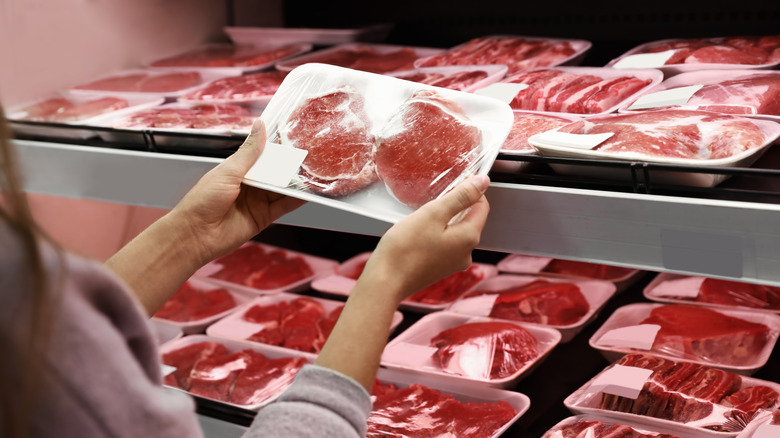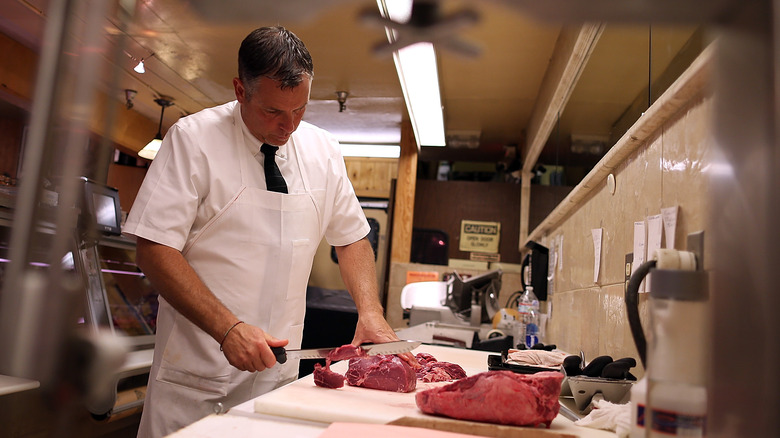The Real Difference Between The Cheapest And Most Expensive Cuts Of Meat
Knowing what makes a good cut of meat at your butcher shop or steakhouse can be a bit confusing — especially if all you have to go on is price. A pound of ground beef, for example, might only be a few bucks, but a filet of Wagyu beef could easily cost you over $100. Knowing what separates a cheap cut of meat from an expensive one can really go a long way towards helping you buy the right cut of meat.
As far as beef goes, it's really all about where it comes from in the cow and the marbling of the meat. Marbling is one of those butcher's terms that refers to the fine threads of fat in a cut of beef that results in it having a mouth-watering flavor (via USDA). Back to those cuts of meat, though... something like tripe is going to always be cheap, because most people aren't clamoring to eat the stomach lining of a cow or sheep.
Eye of round, though, is a much more common and cheap cut of beef that comes from the hindquarters of a cow. This is what often gets turned into ground beef or sold as cubed stew meat. The reason that it's so cheap, again, has to do with the marbling, as eye of round is incredibly lean and a lot less tender and flavorful.
The best cuts of meat come from the same area
As for the best cuts of meat that you'll find on the menu of your local fancy steakhouse, well, those are going to be things like T-bones, porterhouses, rib eyes, and filet mignon. All of these cuts come from the cow's middle section and unlike the hindquarters, which are full of working muscle, these cuts of beef are a lot more tender.
Something like a T-bone, which can be divided up as both tenderloin and strip, is going to have that ample marbling that when cooked will render down into the meat and result in a tender and tasty bite (via My Chicago Steak). Expect to pay more if it's a thicker cut too. Something like pork is going to be a little different, but a pricier cut like pork loin or chops are still going to come from the center of the pig, whereas cheaper cuts like ham come from the back (via Modern Farmer).
None of this is to say that you can't make cheap steak taste expensive – and really good — it just takes a different approach.

